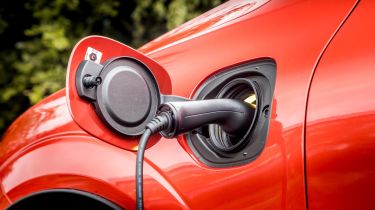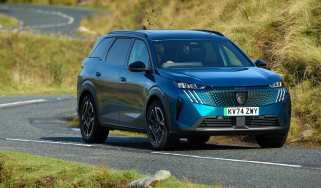Volvo XC60 Recharge hybrid range, MPG, CO2 & charging
The Volvo XC60 Recharge plug-in hybrid is easy to live with, offering over 40 miles of electric driving and low CO2 emissions for such a big SUV
| Fuel economy | CO2 emissions | Electric range | Wallbox charge time |
|---|---|---|---|
| 257-283mpg | 23-25g/km | 47-49 miles | 3hrs (6.4kW) |
A mid-sized premium SUV like the XC60 might not be the obvious plug-in hybrid choice, but Volvo's setup combines petrol and electric power to good effect, with strong electric range, decent fuel economy and low CO2 output. Volvo updated the car in late 2021, adding a larger 18.8kWh battery and improving fuel economy, so now the plug-in hybrid SUV can return up to 283mpg, rather than closer to 100mpg. Achieving that figure means topping up the battery before every journey, but thankfully, charging the XC60 Recharge is an easy task.
Volvo XC60 Recharge hybrid range
With a full battery, the XC60 Recharge will officially manage between 47 and 49 miles on electric power depending on trim choice. In reality, however, that’s likely to be closer to 30 or 35 miles, and we don’t reckon you’ll see a huge difference even if you opt for the range-topping model with the biggest wheels. Charging as often as possible and using that range to best effect will see you maximise fuel economy, but even if you charge regularly you’ll need to be going great guns to come close to Volvo’s claim of up to 283mpg. If you can plug in at home and at your place of work, this helps maximise efficiency.
Charge time
The plug-in hybrid XC60 comes with a seven-metre Type 2 charging cable as standard, which you’ll use for topping up from a home wallbox or most public charging points. The on-board charger has been upgraded since the car launched and now limits maximum charging speed to 6.4kW (previously 3.7kW), which almost halves the projected charge time. Those with a standard home wallbox should be able to fully recharge the car in around three hours.
This is the most efficient way to charge the Volvo XC60 Recharge’s 18.8kWh lithium-ion battery, but there is another method. There’s a driving mode that forces energy into the battery on the move – useful if you want to top the battery up for electric driving when you get to a town, but it does place more strain on the engine, so expect your fuel economy to decrease if you engage this setting. Honestly, we wouldn’t bother.




